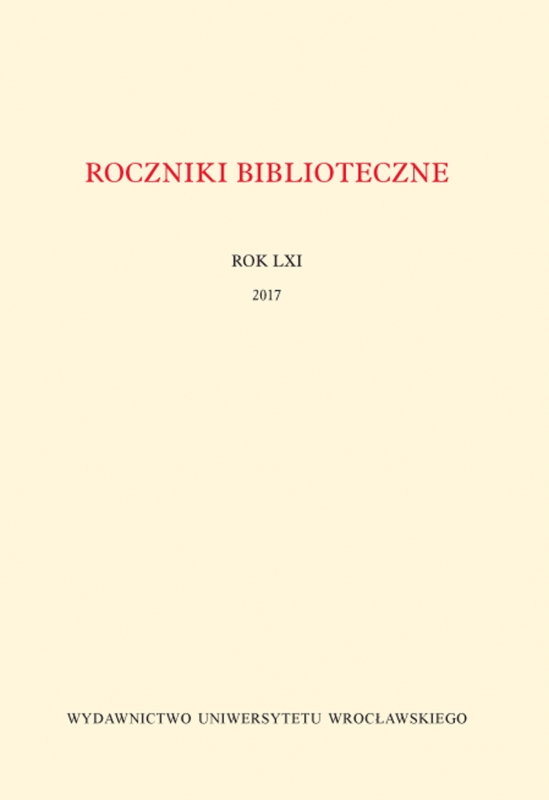

Artykuły i materiały

OD BIBLIOTEKI BRAJLOWSKIEJ DO CYFROWEJ, CZYLI O MATERIAŁACH ALTERNATYWNYCH I TECHNOLOGIACH WSPOMAGAJĄCYCH DLA UŻYTKOWNIKÓW Z NIEPEŁNOSPRAWNOŚCIĄ WZROKU. W KRĘGU ROZWAŻAŃ BIBLIOLOGICZNO-TYFLOLOGICZNYCH
Źródła informacji i technologie informacyjno-komunikacyjne w zapisach prawnych. Kognitywny proces zachowania się użytkownika z niepełnosprawnością wzroku. Materiały alternatywne i technologie wspomagające we współczesnej bibliotece. Zastosowanie technologii cyfrowych w bibliotekach dla niewidomych w Polsce.
FROM A BRAILLE TO A DIGITAL LIBRARY, I.E. ON ALTERNATIVE MATERIALS AND TECHNOLOGICAL AIDS FOR USERS WITH VISUAL IMPAIRMENTS. REFLECTIONS ON BIBLIOLOGY AND VISUAL IMPAIRMENT
Among groups in society at risk of digital exclusion are people with visual impairments. Yet new technologies expand access to information for the visually impaired; they reduce or even eliminate their reading disability and introduce the visually impaired to information culture. However, this has to be based on a possibility, enshrined in law, of using various materials in alternative formats and with the help of technology. The present paper, based an analysis of documents and participant observation, examines questions concerning key legal solutions regulating access of people with visual impairments to sources of information, and information and communication technologies, as well as the specifi city of the cognitive process of behaviour of visually impaired users. The author presents alternative formats of library material and supporting technologies, particularly modern digital version of the Braille system, tactile graphics and audio description. She also examines the evolution of libraries for the blind. The paper ends with suggestions concerning libraries for visually impaired users and well as proposal of research discourses.